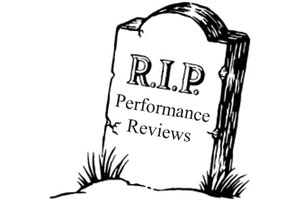 Instead of focusing more of their efforts on keeping the talent they have, businesses often spend too much time and money finding talent from the outside. Given that it is always cheaper to keep your existing workforce than it is to replace it, what can be done to improve retention?
Instead of focusing more of their efforts on keeping the talent they have, businesses often spend too much time and money finding talent from the outside. Given that it is always cheaper to keep your existing workforce than it is to replace it, what can be done to improve retention?
Retention depends on a number of factors and – of course – a reasonable level of voluntary turnover is actually desirable. In fact, there may be a need to dispassionately assess whether the people you currently have are the right ones to take your strategy forward. If that is not the case, then you clearly need to be worrying about things other than retention. But if it is, then a well thought through program to address workforce engagement (assuming it is also integrated with the rest of your talent management initiatives) is likely to pay for itself many times over.
Let’s not forget, however, that there can often be knee-jerk reactions to retention problems which do not work. They can be desperate and too late in the day, and often involve throwing money at people when dollars are not the underlying driver of dissatisfaction. In fact, such a reaction may be very costly and still not result in true engagement.
What do we mean when we talk about engagement?
Engagement comes when your workforce feels committed to your organisation. Such engagement has to be more than just loyalty to the organisation as demonstrated by showing up each day. It has to be a willingness to go above and beyond, and a feeling both that the organisation is something special and that employee’s individual contributions are valued.
Getting that kind of engagement depends, of course, on the complex interplay of many factors that are ideally measured and analysed through an employee survey specifically designed to measure engagement. But, if you can isolate those factors, you can then better determine what the pressure points are that matter to your people.
Those pressure points can be issues such as:
- Career development opportunities.
- Trust in leadership.
- Rewards and recognition.
- Organisation and staffing levels.
- Work/life balance.
Identifying these pressure points will drive the direction of HR programs and processes you need to have in place to influence those issues.
As you compare the list of engagement issues to your HR policies and practices you should aim to answer the following questions:
- What are we doing right that we need to continue to do well?
- What are we not doing that is conspicuous by its absence to people?
- What are we doing that has little effect on commitment ie. why are we spending time and money on this?
Simply coming up with a long list of action items to address these issues is not going to guarantee that your workforce will be any more engaged. For example, if – as part of a pay-for-performance initiative – a better annual pay review process is implemented, but the corresponding performance evaluation process does not measure the right things, engagement is likely to stay in the danger zone.
What is needed is a comprehensive and integrated talent management plan. One that for example:
- Defines the skills and behaviours required by the organisation,
- Identifies where those skills currently reside and where the gaps are,
- Creates a continuous learning environment to fill those skills gaps through stretch assignments and other development opportunities,
- Recruits from outside those critical skills that cannot be provided internally,
- Supports a meritocratic culture that rewards people for developing and exhibiting the required skills and behaviors, and
- Encourages communication and dialogue between leadership and the workforce.
However, the single most important success factor is that leadership is firmly on-board – both with the need for workforce engagement and the talent management plan that will deliver it.
In summary, the key conclusions about employee engagement are as follows:
- It is easier and less expensive to re-recruit your existing workforce than it is to replace it.
- By measuring employee engagement and understanding what drives it, you will uncover what HR programs should be implemented or re-worked.
- Optimum engagement is most likely to be achieved when all your HR activities are integrated via a comprehensive talent management plan.
In the final analysis, the true benefit of workforce engagement is not reduced recruiting costs. It is the increased productivity and morale brought about by a workforce that has faith in the organisation’s future and its role in it.









